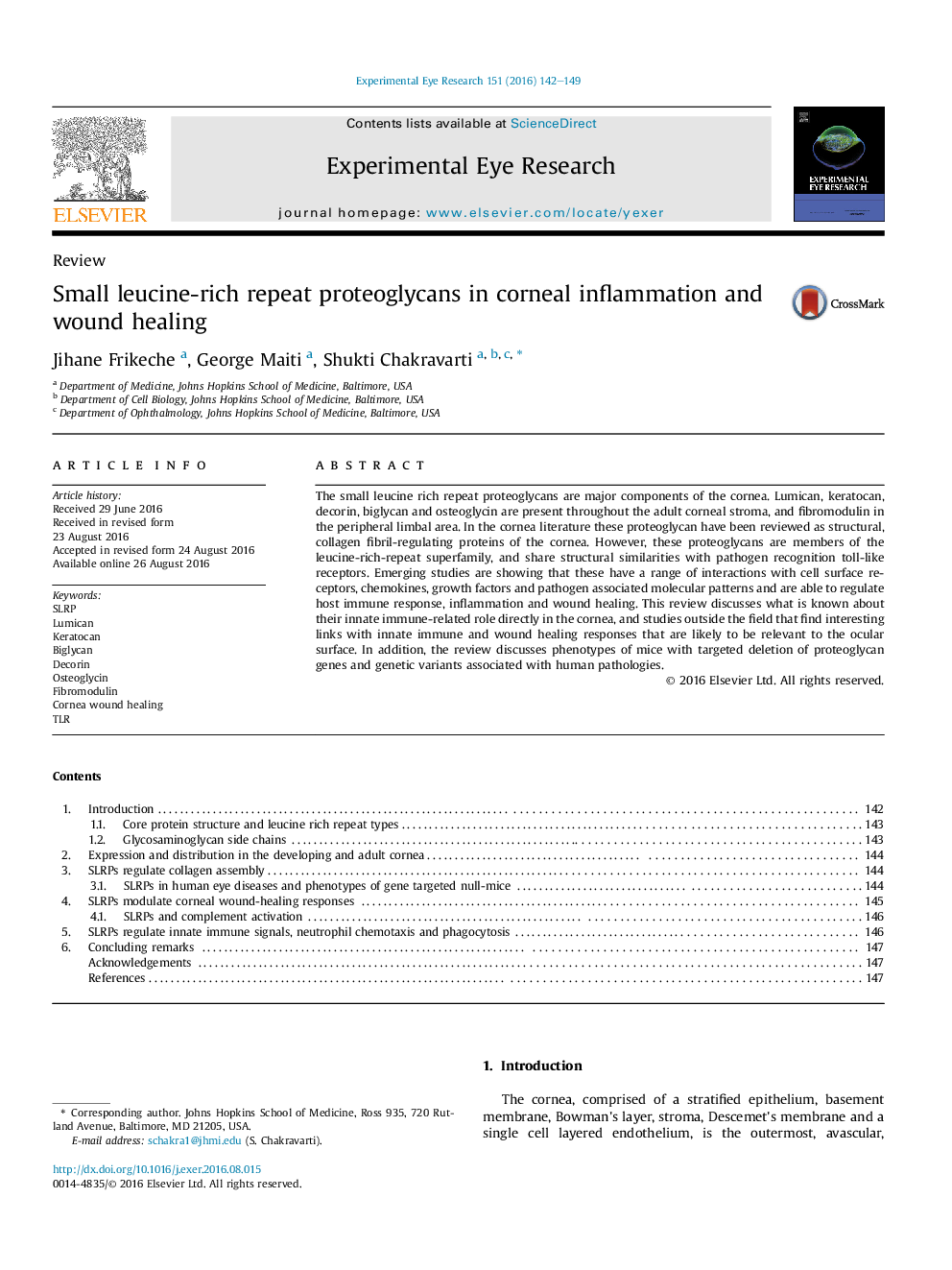| Article ID | Journal | Published Year | Pages | File Type |
|---|---|---|---|---|
| 6196173 | Experimental Eye Research | 2016 | 8 Pages |
â¢This review discusses small leucine rich repeat proteoglycans of the cornea.â¢It focuses on functions of the proteoglycans in innate immune response, inflammation and wound healing of the cornea.â¢Functions of lumican, keratocan, fibromodulin, biglycan, decorin and osteoglycin are discussed.
The small leucine rich repeat proteoglycans are major components of the cornea. Lumican, keratocan, decorin, biglycan and osteoglycin are present throughout the adult corneal stroma, and fibromodulin in the peripheral limbal area. In the cornea literature these proteoglycan have been reviewed as structural, collagen fibril-regulating proteins of the cornea. However, these proteoglycans are members of the leucine-rich-repeat superfamily, and share structural similarities with pathogen recognition toll-like receptors. Emerging studies are showing that these have a range of interactions with cell surface receptors, chemokines, growth factors and pathogen associated molecular patterns and are able to regulate host immune response, inflammation and wound healing. This review discusses what is known about their innate immune-related role directly in the cornea, and studies outside the field that find interesting links with innate immune and wound healing responses that are likely to be relevant to the ocular surface. In addition, the review discusses phenotypes of mice with targeted deletion of proteoglycan genes and genetic variants associated with human pathologies.
